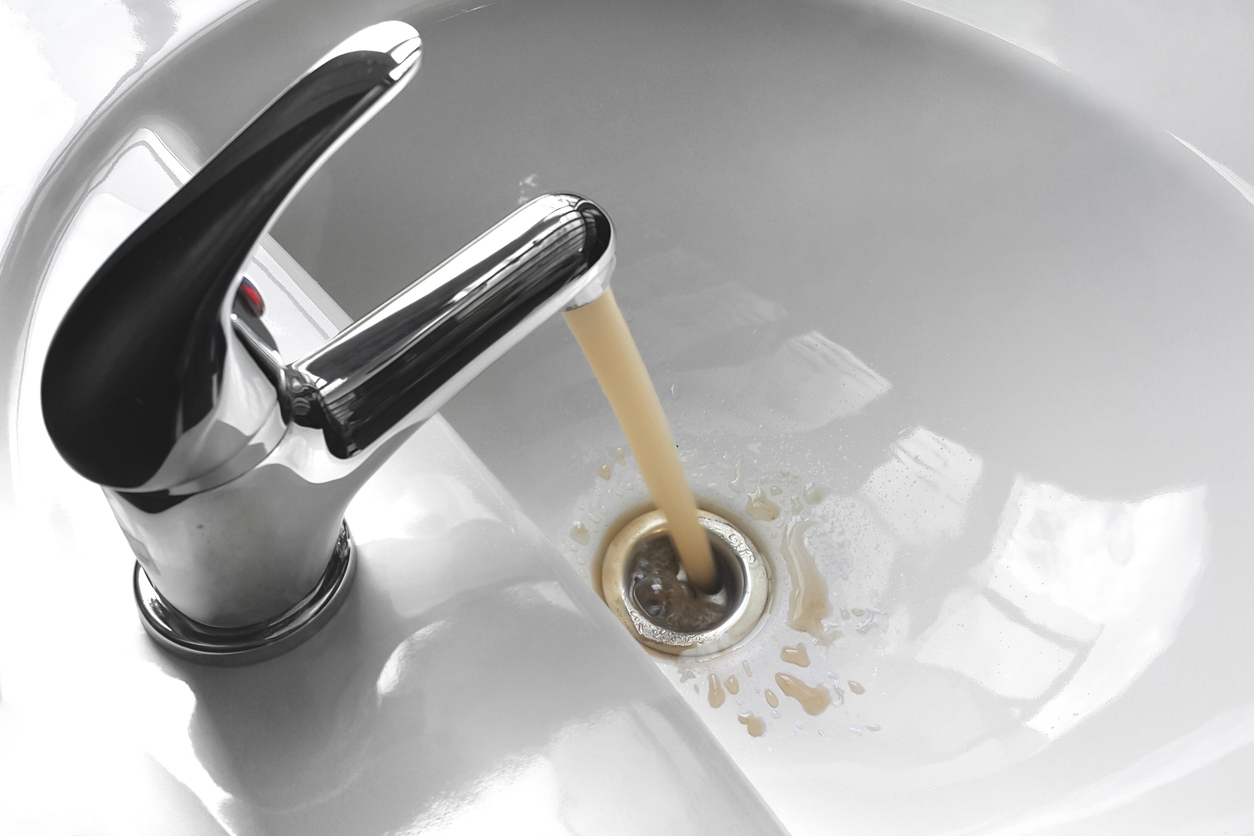Why is My Hot Water Brown, But Cold Water Clear?

Why is My Hot Water Brown, But Cold Water Clear?
Have you ever turned on your hot water tap, only to be greeted by a stream of brown, murky water? It’s an unsettling sight. To make it more confusing (and unsettling), is your cold water running clear? The phenomenon of hot water appearing brown while cold water remains clear is primarily attributed to the presence of rust, sediment, or minerals in the water supply, often related to the water heater. To help understand the causes and how to address hot brown water, but clear cold water, then the following expands on crucial information to address this issue.
What are the Main Causes of Brown Hot Water?
With the hot water being brown, but the cold water being clear, the main issue to address is the hot water. Fortunately, it is pretty straightforward to troubleshoot the main reasons for hot brown water.
- Rust and Sediment Accumulation: Rust accumulates in pipes, particularly over time. As a result, when the hot water is turned on, then this rust can be dislodged and enter the water supply, causing discoloration. This is more common in homes with iron pipes, where rust flakes off and into the water supply.
- Water Heater Issues: The water heater itself is a frequent source of brown water. Sediments can settle at the bottom of the tank, and when hot water is drawn, this mixes with the water. Additionally, if the water heater is aging or has internal corrosion, it can release rust into the water supply.
Additionally, for homes that rely on well water, there are a few other items that can contribute towards hot brown water.
- Sediment Build-up: Similar to rust and sediment build-up in the pipes, wells often draw water from underground sources that contain various sediments like iron, manganese, and dirt. Over time, these sediments can accumulate in your water heater, especially if it’s not regularly flushed. When the water is heated, the sediments can become dislodged, causing the hot water to turn brown.
- Iron and Manganese: These minerals are common in well water and can oxidize when heated, leading to rusty or brown-colored water. Iron and manganese can also accumulate in the water heater, contributing to the discoloration.
- Corrosion: The presence of certain minerals in well water can accelerate the corrosion of metal pipes and water heaters. This corrosion can release rust into the water, particularly when it’s heated, resulting in brown hot water.
- Bacterial Growth: In some cases, specific bacteria can thrive in the warm environment of a water heater, particularly in well water systems. These bacteria can react with iron, creating iron bacteria that produce a reddish-brown slime, which can tint the water brown.
What are Common Tips to Troubleshoot Hot Brown Water?
While seeing brown water come out of a faucet is alarming, it may have a simple solution. One of the first things to do is check the water sources. By understanding the source of the issue, then you can narrow down how to address the issue. For example, to determine if the issue is with the water heater, compare the hot and cold water from different faucets. If only the hot water is discolored in all faucets, the problem likely lies within the water heater vs rust or sediment within the pipes. Additionally, running the cold water for several minutes can help clear out any temporary discoloration caused by disturbances in the water supply. If the brown water persists, further investigation is required.
Ultimately, brown hot water is typically a sign of rust or sediment from the water heater or plumbing system, while cold water remains clear because it has not been affected by these factors. Regular maintenance to your well and plumbing system, along with paying prompt attention to water issues can mitigate these problems.
What Are The Signs of a Contaminated Water Supply?
Undoubtedly, brown water makes one think of water contamination. With the hot brown water, but cold clear water issue, then in all likelihood, the underlying cause relates to sediment and the water heater. However, it is important to understand the signs of water contamination.
- Cloudy or Murky Water: Clean water should be clear, so any cloudiness or turbidity can indicate the presence of contaminants. Likewise, any water that is brown, orange, yellow, green or any other color besides clear may contain contaminants like rust, minerals, or chemicals.
- Unusual Odors: Certain smells and odors frequently signal a possible contamination. For example, rotten egg smells may indicate the presence of hydrogen sulfide. Also, the smell of chlorine could signal exactly that, excessive chlorine levels in the water. Finally, if you smell any strange odors, then contact a local water technician to test the water supply.
- Odd tastes: Like unusual odors, if the water tastes odd, such as metallic, that might indicate iron, copper, or lead. Additionally, salty, bitter, sour or even chemical-tasting water could signify contamination issues as well.
- Visible Sediment, Stains or Buildup: For any visible sediment or particles in the water, it is important to test the water safety and quality immediately. Related, but not as severe of an emergency water issue is rust stains around fixtures and faucets (signaling possible iron contamination) or scale buildup with white chalky reside (signaling potential hard water issues).
If you notice any of these signs, it’s advisable to have your water professionally tested to identify any contaminants and determine appropriate treatment options. Additionally, annual water testing is recommended, particularly for homes with well water. If any potential warning signs seem familiar, then a whole house water filtration system may help put your mind at ease.
What are the Best Methods to Purify Water?
First and foremost, using a high-quality whole home water purification system can remove many contaminants and sediments that cause water issues, such as discoloration. Additionally, other methods to purify your city or well water, include reverse osmosis (RO). With a RO system, it removes contaminants through pressure and a semi-permeable membrane. In a RO system, water flows from the concentrated side (with contaminants) through the RO membrane to a less concentrated side (with contaminants removed). The end result is clean water (called permeate).
Ultimately, when dealing with discolored water, such as hot brown water, it’s important to identify the underlying cause to choose the most appropriate treatment method. If discoloration persists or you’re unsure of the cause, it’s best to consult with a water quality professional.
Aqua Pump is your Golden Eagle filtration specialist, offering Connecticut & western Massachusetts residents water testing, analysis, and treatment for any water condition, including arsenic, PFAS, and uranium. We also sell, install, and service a complete line of quality water softening and conditioning equipment, including chemical-free filters.
Contact us today to learn more about our services and how we can help improve your water quality.


